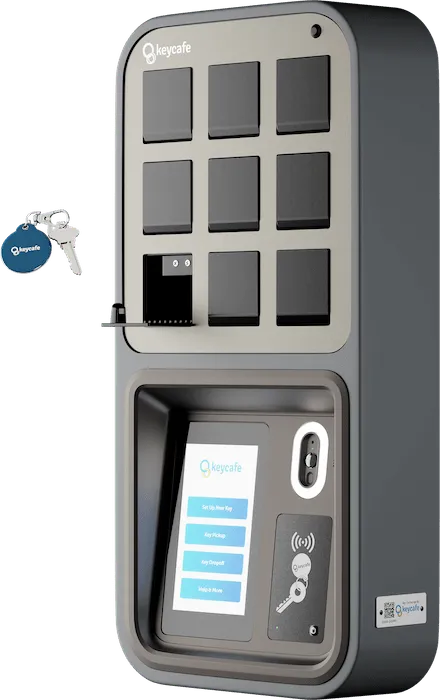0 minutes
Written by
Diana Mamani
Published on
August 22, 2025
Published on
August 22, 2025
Modified on
November 17, 2025
Go Back


Safety and compliance break down when access is unclear and records are scattered. Automated key control fixes both: it limits who can take which vehicle; and creates a clean, time-stamped trail of every check-out and return. Tie that access data to inspections and duty logs, and you reduce unauthorized use, prevent out-of-service vehicles from being dispatched, and make audits faster and fairer. The approach follows the “least privilege” principle: people get only the access they need to do the job, nothing more.
Policies like “keys live in the cabinet” don’t build accountability on their own. Assign access by role (driver, dispatcher, technician, supervisor) and, when needed, by shift window. In information-security standards, this is called “least privilege,” and it’s a proven way to lower risk without adding friction. In practice, it means a night-shift driver can pull the keys for Unit 42 during approved hours, while a supervisor can grant a one-time exception when a storm hits.
How Keycafe helps: Keycafe supports granular, role-based permissions that can be scheduled for a specific time window or set as ongoing access—so your policy is enforced at the locker, not just on paper.
Regulated fleets must document defects and repairs using Driver Vehicle Inspection Reports (DVIRs), and carriers must retain those DVIRs and related certifications for three months. If a vehicle is marked “out of service,” it shouldn’t be dispatched until the repair is closed and the paperwork is in order. Automated key control reinforces that rule: when maintenance flags a unit, a manager can immediately disable access to its keys at the locker and re-enable them after repair, creating a clear custody boundary that matches the DVIR trail.
How Keycafe helps: Managers can disable or reinstate access in real time, and integrations via API or webhooks can update access based on status changes in your maintenance or telematics systems (initiated by your workflow).
For motor carriers, Hours-of-Service (HOS) compliance is enforced with Electronic Logging Devices (ELDs) that record driving time directly from the vehicle. When you cross-check ELD duty status with key check-outs and returns, you get a single story of who was driving, when, and in which vehicle—useful for audits and incident reviews.
Paper sign-out sheets go missing; spreadsheets drift. A connected key-control system creates time-stamped, user-attributed histories you can export on demand. That makes it straightforward to show an inspector your DVIR retention, demonstrate custody for a specific vehicle, or reconcile an exception report in minutes instead of hours.
How Keycafe helps: Keycafe stores every pick-up/drop-off and access event in the cloud and lets you export CSV reports of accesses, keys, and key exchanges for your retention policy.
Some depots need more than logs. With built-in video on modern lockers, you can capture short clips when someone interacts with the screen—or when motion is detected in front of the unit—adding a visual layer to the audit trail for sensitive assets or shared motor pools.
How Keycafe helps: Keycafe’s MS5 SmartBox supports video recording with triggers you can set to proximity (≈2 ft) or screen interaction; footage can be stored on-device and, on certain plans, uploaded for cloud viewing.
Cloud-managed lockers make it practical to enforce the same rules at multiple yards, shifts, and departments; without stationing a supervisor at every cabinet. Fleet admins can see who has which keys now, revoke access instantly, and standardize processes across locations. That consistency is what turns “policy” into everyday behavior.
Automated key control doesn’t replace your safety and compliance programs; it makes them stick. By restricting access to the right people at the right times, aligning DVIR/ELD evidence with key custody, and keeping audit data at your fingertips, you reduce risk and the administrative load that comes with it. If you’re ready to pilot, start with one high-traffic depot and measure the reduction in exceptions and unauthorized use; you’ll see the cultural shift quickly.
